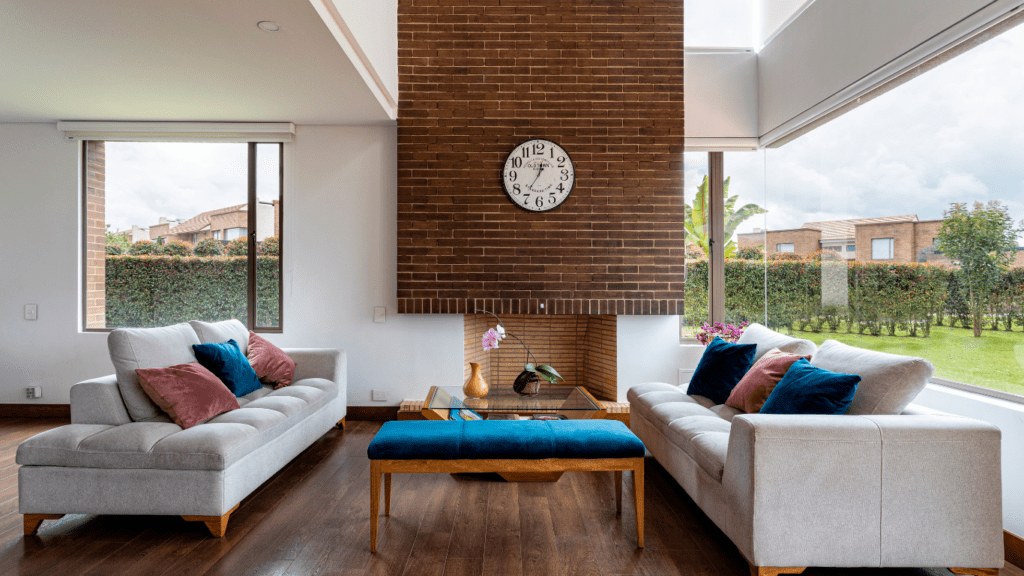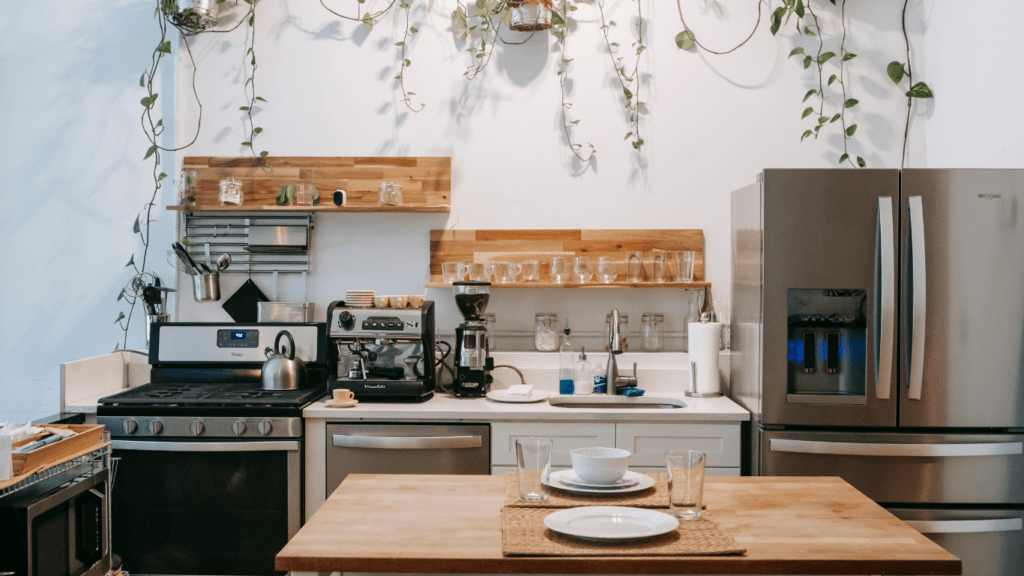Understanding Small Space Challenges
Living in a small space often means dealing with limited square footage, which can pose several unique challenges. Maximizing every inch of space becomes crucial for a comfortable living environment. Limited storage options can often lead to clutter if items are not carefully organized and stored. Additionally, smaller rooms can feel cramped, especially if furniture is not appropriately sized or strategically placed.
Finding multi-functional furniture is key in small spaces. For example, a sofa bed can provide seating during the day and transform into a sleeping area at night, saving valuable space. Versatility in furniture helps in adapting to various activities without overwhelming the living area.
Proper lighting is also essential in small spaces. Natural light should be maximized, and mirrors can be used to reflect light, making rooms appear larger. When natural light is lacking, well-placed artificial lighting, such as wall sconces and floor lamps, can brighten darker corners.
Traffic flow needs careful consideration. Arranging furniture to allow easy movement helps avoid creating bottlenecks. Clear pathways prevent the area from feeling claustrophobic. For example, placing the sofa against a wall can free up central space for easy navigation.
Visual clutter can overwhelm a small space quickly. Maintaining a consistent color scheme and opting for streamlined furniture designs can reduce visual noise. Minimalist décor techniques, like using fewer decorative items and choosing furniture with clean lines, can make a space feel more open and airy.
Understanding these challenges and strategically addressing them can significantly improve the coziness and functionality of a small home.
Choosing Multi-functional Furniture
Selecting multi-functional furniture enhances functionality in small spaces. These pieces maximize utility and minimize clutter, making your home cozy.
Convertible Sofas
Convertible sofas serve two purposes, acting as a couch by day and a bed by night. They are perfect for studio apartments and guest rooms, providing seating and sleeping areas. Modern designs often incorporate storage solutions, like hidden compartments under the seats, ideal for storing linens and pillows.
Foldable Tables
Foldable tables adapt to various needs and conserve space when not in use. A foldable dining table can be expanded for meals and folded down for more floor space. Wall-mounted foldable desks offer a practical workspace that can be easily stowed away. These tables are perfect for small kitchens, dining areas, and home offices.
Storage Ottomans
Storage ottomans combine seating and storage, making them ideal for small living rooms. They can be used as footrests, extra seating, or even coffee tables. The internal storage compartment helps keep the space tidy by holding items like:
- blankets
- books
- games
Choose designs with durable fabrics to ensure longevity and ease of cleaning. By integrating these multi-functional furniture pieces, it’s possible to transform any small space into a more organized and inviting home.
Creative Furniture Placement Ideas

Small spaces require innovative solutions to ensure they feel cozy, not cramped. Here are a few creative ideas for furniture placement that can maximize both style and function.
Floating Shelves
Floating shelves provide extra storage without taking up floor space. I installed them in my living room for books and decorative items. These shelves can be placed in various configurations to suit different needs. For instance, I used several in my kitchen to store spices and utensils. They’re perfect for displaying collections or keeping essentials within reach.
Corner Utilization
Corners often remain unused but have great potential for maximizing space. In my bedroom, I placed a corner bookshelf to store novels and a small lamp. In the living room, I fitted a corner desk to create a compact workspace. Even in the bathroom, I used corner shelves to keep toiletries organized. Corners can be efficient spots for desks, shelves and even seating.
Wall-mounted Desks
Wall-mounted desks save significant floor space and fit well into small rooms. I installed one in my home office that folds up when not in use. It’s both practical and stylish. These desks can also double as dining tables in small kitchens. Adjustable wall-mounted desks provide flexibility to adapt to different activities, enhancing the functionality of small spaces.
Incorporating Mirrors And Lighting
Maximizing light through strategic use of mirrors and well-placed lighting can significantly enhance the feeling of spaciousness in a small home. These elements not only brighten the space but also add depth and warmth.
Strategic Mirror Placement
- Position mirrors opposite windows to reflect natural light, instantly making the room feel larger and brighter.
- Hanging mirrors on walls perpendicular to the windows can also help capture and distribute daylight throughout the space.
- Use large mirrors behind furniture, like sofas or dining tables, to create the illusion of more space.
- Clustered arrangements of smaller mirrors add stylish décor elements while serving a functional purpose.
- Mirrors with decorative frames can act as focal points, giving the room character without occupying extra space.
Smart Lighting Solutions
Incorporate layered lighting to enhance the coziness of a small home. Use a combination of ambient, task, and accent lighting for balance. Place floor lamps in corners to brighten dark areas without taking up valuable surface space. Install wall sconces to save floor space and create a soft glow. Under-cabinet lights in kitchens and bathrooms provide task lighting while keeping countertops clutter-free. Add LED strip lights under shelves or along baseboards for subtle, indirect lighting. Using dimmable lights allows control over the mood and brightness, adapting to different times of day and activities.
Personalizing Your Space
Adding a personal touch to small spaces can make them feel more inviting. I share a few ideas for making your home uniquely yours within compact square footage.
Adding Plants
Bringing nature indoors enhances coziness. Small indoor plants, like succulents and ferns, fit perfectly on shelves and window sills without occupying much space. Hanging plants add greenery without using floor space, creating a vertical garden effect. Grouping several small plants together on a table or a shelf creates a mini indoor garden, adding vibrancy and life to the room. Use plant stands or wall-mounted planters to elevate plants and create interesting visual layers.
Using Color Schemes
Color has a significant impact on how we perceive space. Light colors, such as whites and pastels, make a room feel larger and brighter. Using a consistent color palette throughout the room creates a sense of unity and openness. Accent walls add depth and interest without overwhelming the space—try using a bold color or wallpaper on one wall while keeping the other walls neutral. Additionally, incorporating a few colorful accessories, like cushions or throws, can enliven the space without cluttering it. Repeating colors in different elements, such as rugs and artwork, ties the room together, reinforcing the color scheme and creating a harmonious environment.



 Wesleyero McGill – Founder & CEO
Wesleyero McGill is the visionary behind Castle Shelf House, bringing over a decade of experience in home renovation and design. His passion for creating beautiful, functional spaces has led him to establish this platform, where he shares the latest trends in interior and exterior design. As Founder and CEO, Wesleyero is dedicated to offering expert advice on furniture placement, home styling, and renovation, helping homeowners transform their spaces with ease and confidence.
Wesleyero McGill – Founder & CEO
Wesleyero McGill is the visionary behind Castle Shelf House, bringing over a decade of experience in home renovation and design. His passion for creating beautiful, functional spaces has led him to establish this platform, where he shares the latest trends in interior and exterior design. As Founder and CEO, Wesleyero is dedicated to offering expert advice on furniture placement, home styling, and renovation, helping homeowners transform their spaces with ease and confidence.
